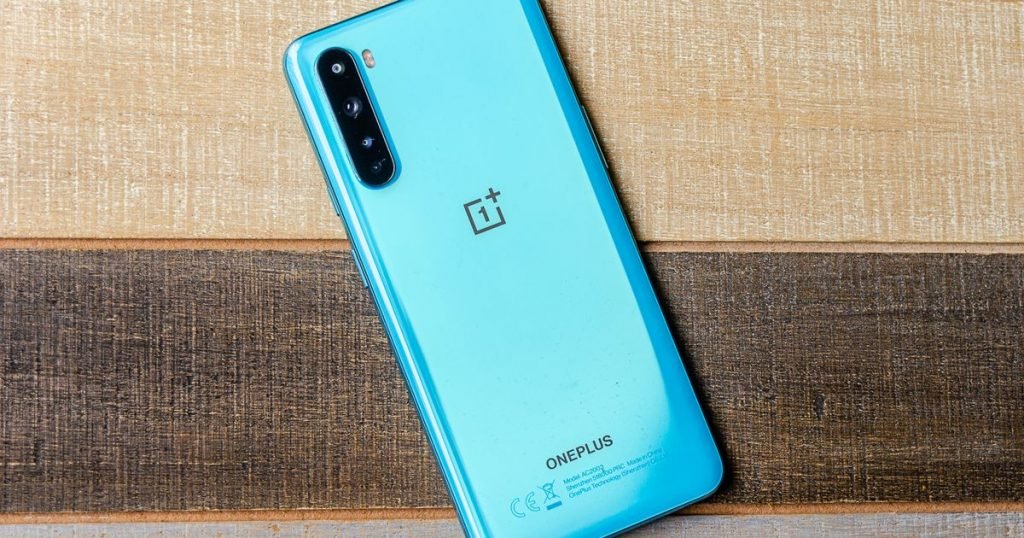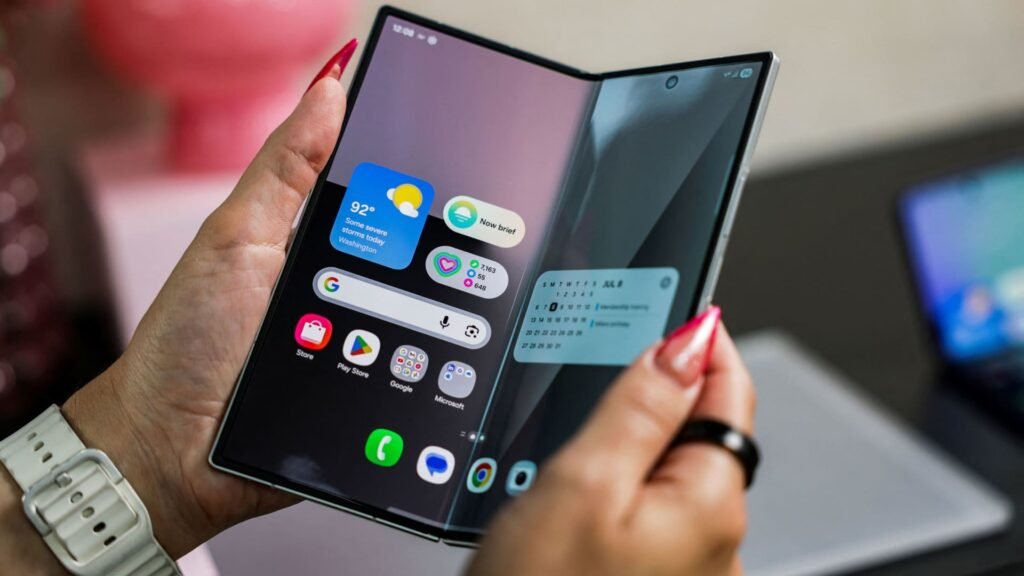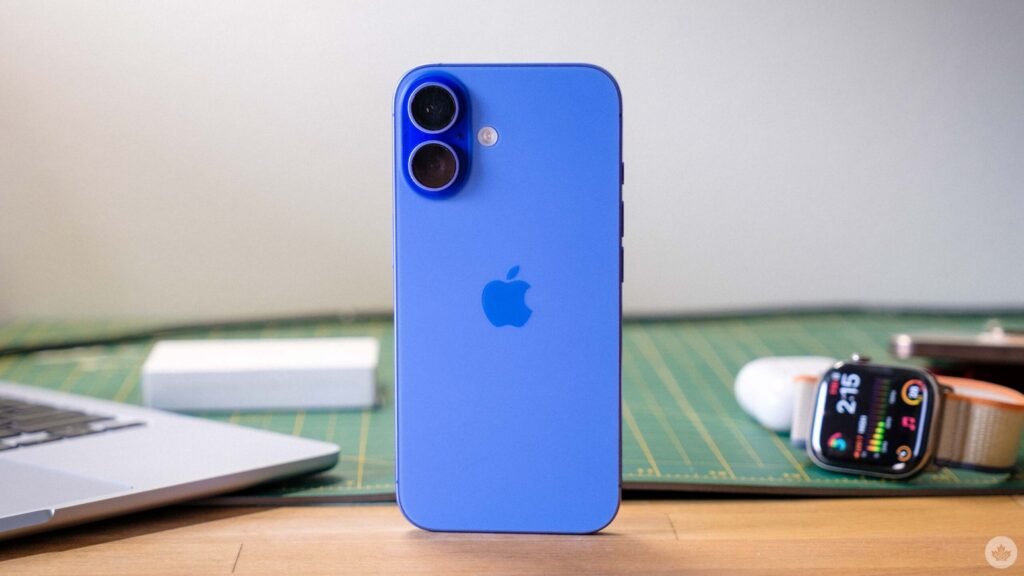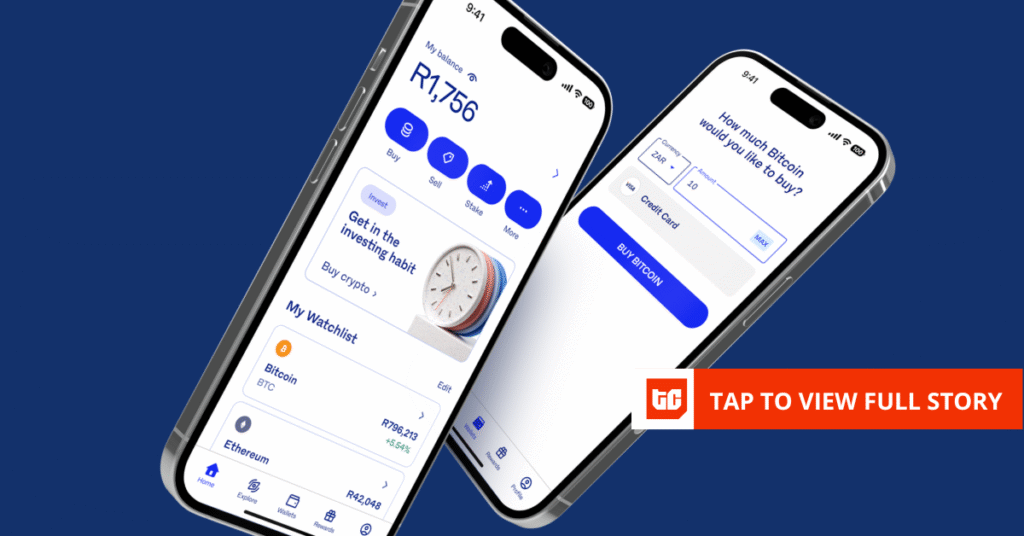OnePlus Nord review: It’s all about that selfie cam

Smooth 90Hz refresh rate • Vibrant display • Premium feel • 5G support • Comfortable size • Affordable • Excellent battery life
Unpredictable rear camera photo quality • Uninspired design • No headphone jack • Lack of U.S. availability
The OnePlus Nord is a great mid-range option, with a premium feel, smooth performance, and wonderful battery life. But its uneven rear-camera performance holds it back from being the ideal budget Android phone.
When I reviewed the OnePlus 8 Pro, I critiqued it for being expensive — for the OnePlus brand, that is. While it’s an excellent device, I also couldn’t help but wonder if its $890 starting price was the beginning of the “new normal” for all of the company’s phones to come.
OnePlus has typically been the brand we could rely on to deliver phones with top-tier specs while keeping the price down. Even when competitors (yes, we mean Apple and Samsung) were pumping out $1,000 flagship phones, OnePlus didn’t cave. Instead, it delivered the OnePlus 7 Pro with impressive specs and a reasonable $699 price.
So, when the OnePlus 8 Pro price tag almost crossed the one thousand dollar line, it made me question if the days of high-end but affordable phones from OnePlus were officially a thing of the past.
And then along comes the OnePlus Nord: A mid-range phone with Qualcomm’s Snapdragon 765G chipset (with 5G support), a 48-megapixel rear camera, a 90Hz refresh rate… and a budget price.
It’s not available in the U.S. or anywhere in North America at the moment — and it’s unclear as to when it could drop here. For now, it’ll only be released in Europe and India. But based on European pricing, which starts at 399 Euros, the Nord would technically set you back about $470 USD.
But the Nord wasn’t strictly created for OnePlus loyalists who have been holding out for an affordable phone.
Take one look at the OnePlus Nord Instagram account and you’ll see custom memes, punny videos, and ads featuring models who look like they’ve been cherry-picked straight from viral TikToks (neon blue eyeliner and all).
SEE ALSO: OnePlus 8 Pro review: An impressive flagship that’s priced just right
Even the Nord’s official launch, which was held virtually due to the pandemic, wasn’t limited to a live-stream. Viewers had the option to tune in via augmented reality, ultimately placing the OnePlus presentation stage within their living rooms.
Based on this social strategy, it’s clear OnePlus decided to ditch tried-and-true marketing tactics in an attempt to attract a younger, less-moneyed crowd. And, by younger, I mean Gen-Z.
I’ll give it to OnePlus — pushing a mid-range phone like the Nord is a smart move, particularly if it’s looking to increase brand loyalty. The phone features some impressive specs (including an ultra-wide-angle selfie lens for group shots), and is essentially future-proofed with built-in 5G support.
The Nord’s affordable price also makes it easier for parents to stomach, and for their kids or even college students to justify, especially if they’re saving up for it on their own. Its sleek, high-end design doesn’t hurt either, helping to set it apart from typical, cheap-looking budget phones.
Whether or not OnePlus manages to successfully capture the attention of Gen-Z with its viral marketing blitz is another matter entirely; it shouldn’t define the Nord, because it’s an excellent device. Those who can’t afford to drop almost $1,000 on an Android device (or simply don’t want to) can rest assured that the Nord is very capable of delivering smooth performance and all-day battery life. But, as you’ll find out, it’s not an all-around win. There’s still room for improvement.
A very sleek, but unfortunately safe design
When I first previewed the Nord, I noted that the phone maintains OnePlus’ signature design: a pill-shaped camera module and company logo on back. But after spending a lot more time with it, I realized the Nord feels out of touch with the company’s Gen Z marketing approach.
Blue was never my favorite color, but I think it is now.
Image: brenda stolyar / mashable
Don’t get me wrong, that traditional design isn’t bad by any means. But I do wish OnePlus had a little fun with this one by presenting an entirely new aesthetic. You know, the same fun it clearly had with its creative social media content and copy editing in the lead-up to the Nord’s launch.
A quick glance at the Nord’s Quick Start Guide confirms this disconnect between design and marketing. Open it up and you’re greeted with the following message: “If you’re like us, you probably dove directly into the phone and now hours later are picking up this guide, wondering — do I need a Quick Start Guide in my life?” This is the type of quirky, off-brand experimentation I would’ve liked to see implemented within the device itself.
It could’ve included anything from a different form factors (maybe a foldable? That’s a tall order, I know), bringing the pop-up camera back, quirky colors, or even simply switching up the pill-shaped camera module. The Nord would’ve been a perfect opportunity for OnePlus to try a design that’s completely unique from anything it’s ever released before.
Sadly, there’s no headphone jack.
Image: brenda stolyar / mashable
I know I praised Apple’s budget offering, the comparable iPhone SE (2020), for its design, even though it looked identical to the iPhone 8. But that’s because it’s a second-generation model. The Nord, on the other hand, is the first of its kind for the OnePlus brand, so there weren’t really any rules for this one to follow.
Regardless, the Nord still looks very sleek and feels a lot more expensive in-hand than its price would indicate. For starters, it comes in two different color options: Gray Onyx and Blue Marble. With both colors, you can choose between 8GB/128GB or 12GB/256GB storage configurations. Those in India also have the option of a smaller, 6GB/64GB configuration for the Gray Onyx color.
My review unit was of the Blue Marble variety and it’s a really stunning color that sort of shifts in tone depending on the way the light hits it. Sometimes it resembles a baby blue, while other times it looks more teal. The glass exterior also makes it feel a lot more premium and is a refreshing change from the typical plastic-covered budget phones.
Flip the Nord over to its back, and in the left-hand corner you’ll find that quad-camera setup which, as I said before, takes on a pill-shaped form factor. There’s also the OnePlus logo stamped in the middle of the phone’s back with OnePlus written on the bottom. It’s worth noting that the camera bump is a bit noticeable without a case on. So when you place it camera-side down on a flat surface, the phone tilts towards the left and rests its weight on the module.
That classic OnePlus alert slider.
Image: Brenda stolyar / mashable
On its front, the Nord packs a large AMOLED display (more on that, later) and dual hole-punch selfie cameras. The right edge is home to that OnePlus alert slider we all know and love, which allows you to switch between vibrate, silent, or ring. Below that is the power button which can also trigger Google Assistant with a long press. Meanwhile, on the left side is the volume rocker.
At its base, the Nord houses a USB-C port, a single speaker, and a dual nano-SIM card slot. Unfortunately, there’s no headphone jack anywhere on the Nord. But the decision to leave it out is clearly strategic, considering the company launched its wireless (and worthy) OnePlus Buds in conjunction with the phone.
In terms of its size, the Nord is only slightly wider and shorter than the OnePlus 8, which I preferred to the 8 Pro because it was more comfortable to hold in my small hands. The Nord is no different in this regard: It’s super easy to scroll through social media and type one-handed without being paranoid you’re going to drop it.
Did I tell you how much I like this blue?
Image: brenda stolyar / mashable
And, speaking of accidental drops, the Nord did fall to the ground while I was attempting to secure it to a teleprompter. Thankfully, I can report that it’s very durable — it survived the fall without any visible cracks or scratches. In fact, the only evidence of this fumble were the air bubbles that formed underneath the included screen protector.
The Nord doesn’t have an IP rating for dust or water resistance, so you’ll want to be careful with it around liquids. This omission isn’t entirely shocking given that the OnePlus 8 lineup was the first of any of the company’s phones to receive an official IP68 rating.
A super-smooth display for scrolling through those TikToks
The Nord features a 6.44-inch Fluid AMOLED display with 2,400 x 1,080 pixel resolution (408ppi). The colors look bright and vibrant, and it’s easy to see content even in bright light.
I should mention that I always keep all of my devices set to maximum brightness, but that wasn’t the case with the Nord. Throughout my entire time with it, I was fully content to keep brightness set at about the 50-percent mark.
Don’t miss ya, edge-to-edge display.
Image: brenda stolyar / mashable
The Nord’s display also comes with a 90Hz refresh rate turned on by default, which I was surprised to see given its price. Comparable phones like the iPhone SE and Pixel 3a both only reach 60Hz for their respective displays. Of course, you can decrease the Nord’s refresh rate to that lower number via settings, but you should only do so if you’re trying to save battery life.
I stuck with 90Hz, which felt buttery smooth when scrolling through social media apps like Twitter and Instagram. While 60Hz is still an adequate experience, it’s tough to accept that downgrade once you’ve experienced the higher refresh rate.
For added security, the Nord also comes with an in-display fingerprint sensor. This is in addition to setting a PIN or using Face Unlock. If you opt for this particular security layer, a fingerprint outline will appear on screen, prompting you to place your fin
Be the first to write a comment.








